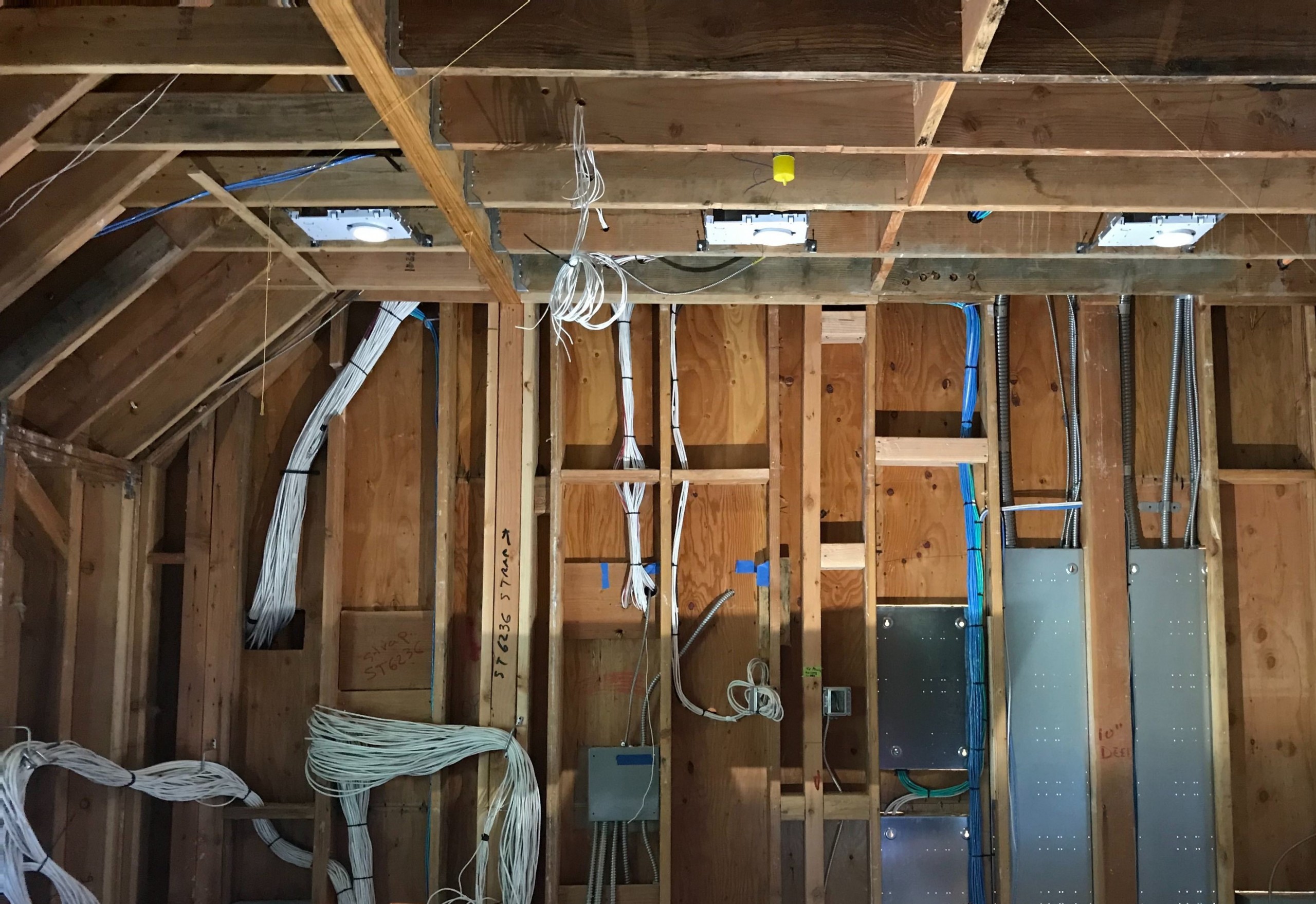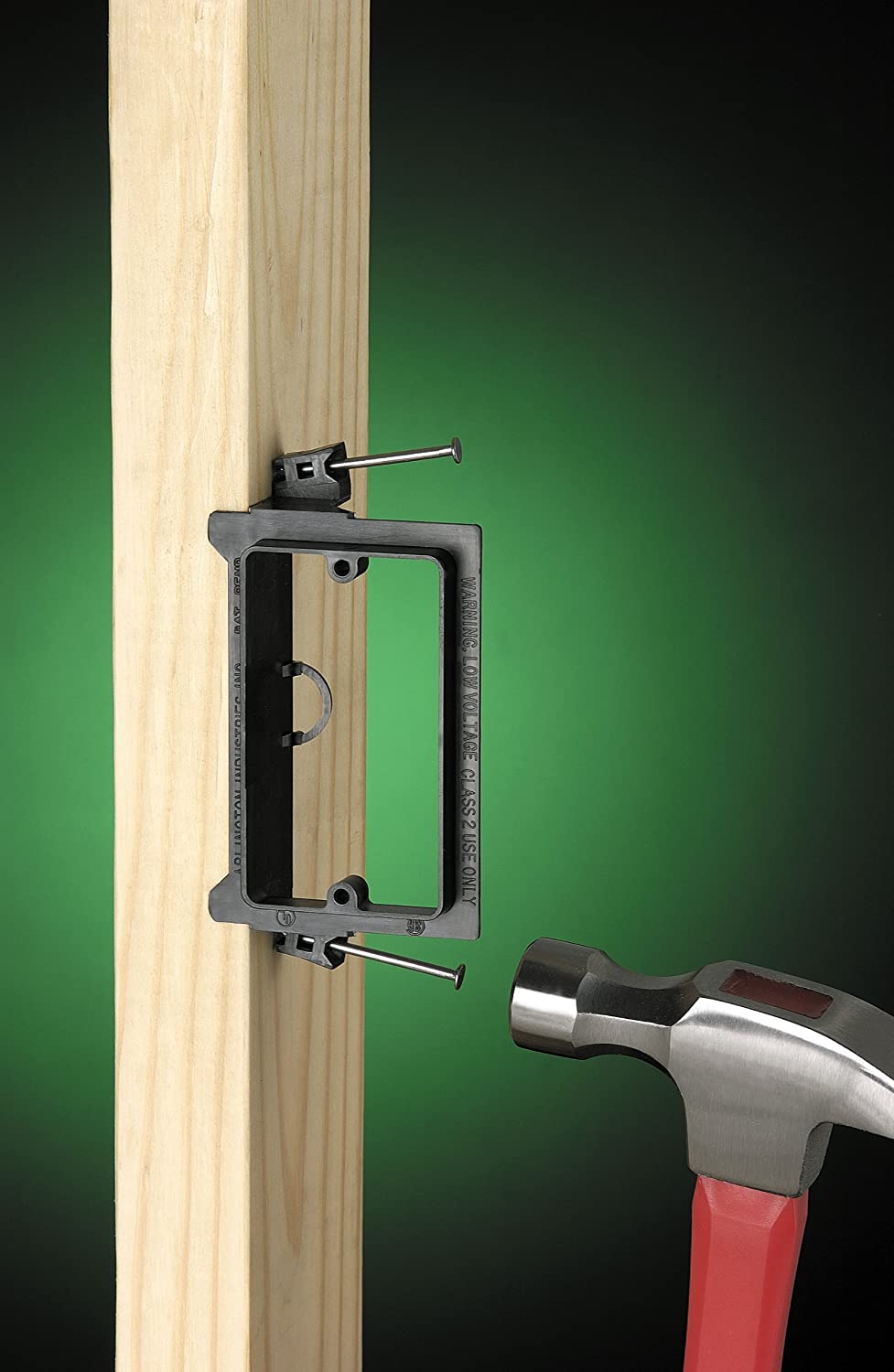Plan for PoE(power over Ethernet) wireless access points on ceiling
As the number and capabilities of Internet connected devices continue to increase, so do the demands placed on residential wireless networks. For a home more then 2 floor, a single router in your basement or wiring closet is no longer powerful enough to handle the strain smart devices place on a network. Everything in the future from your lighting, shades, curtains, cameras are going to be powered by wireless devices. Therefore, we recommend planning for at least multiple wireless access points based on the size of your home.
Instead of using a power outlet, Wireless access points (WAPs) can be powered with Ethernet. No special cables are required as long they are CAT6 cable and fire rated for in-wall use they will do the trick. This is referred to as PoE, or power over Ethernet. By running a few Ethernet cables to various locations in your home, you’ve already set up yourself to expand your wireless range with PoE WAPs.
All new homes should be wired with Ethernet, those wires are usually ran to the same location as cable jacks or AV equipment to a desk or TV/Media Closet. For access points, Ethernet cables are run to a location on the ceiling further away from the walls.
All the wiring should go to a centralized location with power feeds. Typically they are located in the utility room where your cable to DSL line comes into your home.

Use large conduit and run a pull string
Running conduit is a great idea especially if you are mounting a TV where you would want a floating look and have a cabinet close to keep your devices. It gets you as close to future-proof as you can get, as long as you use the proper conduit. We recommend 2″ PVC pipe or 2.5″ flexible conduit used for vacuum by POWERTECH. If you want the kit which includes plates, this is a separate option.
This is the best option, as HDMI cables change and can snap while dismounting the TV. Having a large conduit is worry free for the entire time new TV technologies come out. This solution also turns out very useful to hide a Samsung Frame TV connect one cable as the head for it was about 1.5 inches big.
Wire for multiple Power locations for surround and Subwoofers
If you’ve followed Leslievillegeeks for long, you will know that we believe in wireless audio and placement of surround speakers and subwoofer are important aspects of designing the audio system for your room. Most new surround speakers are wireless however need power. E.g The Sonos Home theatre System. As your layout might change, try to have the surround speakers it spot where potential the couch might go.
Subwoofers are the most difficult speaker to properly place in a room. Subwoofer location has a profound effect on sound quality, which is why you should wire for multiple subwoofer locations. This will allow you to test the subwoofer’s performance in multiples spots around the room and select the optimal location(s) for the best bass for your listening area.
Better yet, wiring for multiple locations will allow you to use multiple subwoofers. Seldom can one subwoofer provide great sound across several seats, but adding as second subwoofer can go a long way in ensuring all listeners hear smooth, even bass.
Record your final product before closing the drywall
Especially in the case of large projects, don’t trust the wiring diagram to memory alone. While you probably don’t need an official wiring diagram home a residential home, always take notes about what is ran where.
I also always take photos of wires that will be hidden in the wall. Better yet, use your phone to take a video of every pre-wire completed. If you are gettign a contractor doing yet, ask the to send you footage. In the video, we explain the purpose and thought process behind each wire. If, for some reason, you can only take photos, then write notes on the wall and capture those notes in your picture.
Its very useful to know the exact location of two studs in the wall and where wires were ran. Taking a photo with the tape measure in it will allow you to easily locate the wire and studs after the home is finished. Or even 5 years down the road.
Use low voltage boxes Available at Home depot and Amazon
High voltage electrical boxes work great for light switches and outlets, but not so great when running HDMI cables or installing volume controls. Whenever possible, you should use low voltage boxes. They are the same size as high voltage boxes, but are not enclosed. These boxes are far more convenient to work with, and in some cases AV wall plates simply won’t work with high voltages boxes.
Cover end of wires with plastic bag
While you may take care handling your 50’ $200 HDMI cable, don’t think that the rest of the people working on your home will equally appreciate its delicacy. After you’ve wired your entire home, cover all exposed wiring with plastic bags. Wrap electrical tape around the bags to ensure they don’t fall off. If you don’t protect exposed cables you will likely come back to a freshly textured and painted home, only to discover that you also have freshly textured and painted cables. While you’re at it, ensure the cables are bundled up in such a way that the drywall installers can actually get the wires through the holes they will have to pre-cut in the drywall.
During new construction or renovation, outlet connectors are terminated and sometimes left unprotected in an unfinished wall area. This can lead to contamination when paint and other substances get on the surface of the connector and damage the contact points inside it.
Avoid HDMI for long distance. If you do run CAT6 together with it.
HDMI is the standard connection when it comes to hooking up modern home theater equipment, so what happens when a pre-wired HDMI cable doesn’t work? Maybe a drywall screw went straight through it? Or what happens when the HDMI specification changes and the cable buried in your wall no longer works properly?
It’s for these reasons, and others, that you should always run CAT6 cables along with any HDMI cable. The CAT6 cables act as a backup. Through the use of an HDMI to ethernet converter, either one or two of the CAT6 cables can be used in place of an HDMI cable.






